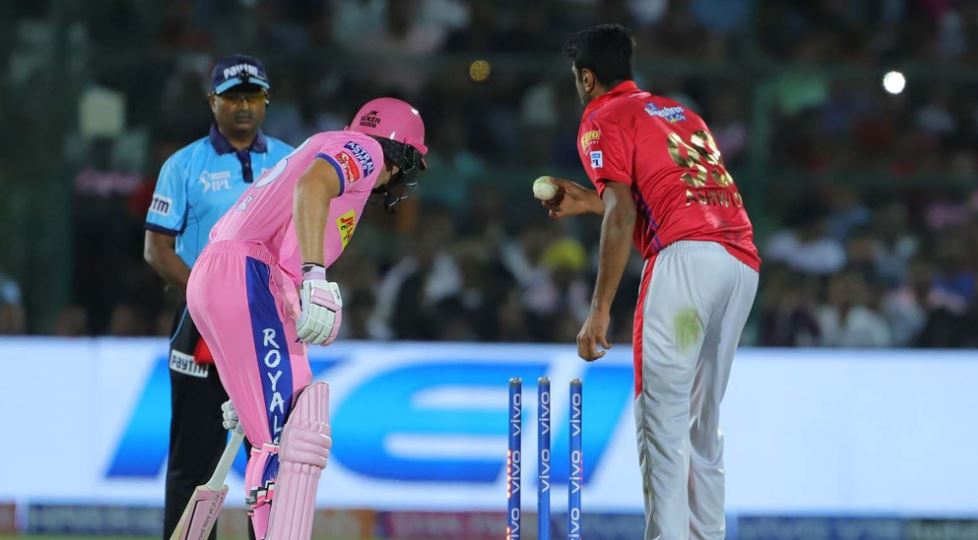Sometimes it takes the actions of a 13-year-old to teach pampered millionaires how to behave like real sportsmen, writes GARY LEMKE.
A day after Ravi Ashwin’s disgraceful ‘Mankad’ which saw Jos Buttler run out at the non-striker’s end during their Indian Premier League match, Beknaz Almazbekov, captain of Turkish U14 football club Galatasaray, was awarded a penalty after going down inside the area.
Despite the referee pointing to the spot, Almazbekov realised the call was wrong and deliberately sent the penalty metres wide of the left-hand post, earning him plaudits from the opposition and even his own teammates. Immediately, however, the trolls were out on the streets of social media. ‘Wouldn’t have done it had he been a professional player’, ‘wouldn’t have done it in an U14 cup final if his team were 1-0 down’, and so on.
However, this was the second of three eye-catching occurrences within the space of 24 hours. First, Ashwin for Kings XI Punjab, then Almazbekov, then Australian tennis’ combustible Nick Kyrgios, who served underhand during his victory over Dusan Lajovic at the Miami Open.
Kyrgios was hailed a ‘genius’ by the mother of former world No 1 Andy Murray, Judy, who claimed she was ‘surprised’ that no other players would follow his example; he had also done the same thing to a furious Rafa Nadal a month earlier.
In the case of Ashwin and Kyrgios, they were entirely within the rules, just as Australia’s Trevor Chappell had been within the law when he bowled an underarm ball to prevent New Zealand’s Brian McKechnie from hitting a six to win their ODI match in 1981.
There have been plenty of other examples of sportspeople acting within the laws of a game, but against the ‘spirit of the game’. There are examples in the entire A to Z of sport. Back in the day I saw Northern Transvaal awarded a penalty on the 22m line (25-yard line back then) against Eastern Province in a Currie Cup rugby match in Port Elizabeth. Naas Botha pointed to the posts and said to the referee, ‘I’m not going for posts.’ The opposition turned their backs and trudged towards their own line. Naas tapped the ball and sprinted for the corner, where he scored a try, which was awarded.
Years later I asked Jonathan Kaplan how he would have reacted. He emphatically said, ‘No try, penalty to EP’ and agreed that while it was lawful it was against the ‘spirit of the game’.
And that is exactly what should have happened with Ashwin in the case of ‘mankading’ Buttler. The third umpire was handed the final decision, and he bottled it by giving Buttler out. He applied the letter of Law 41.16 instead of growing a pair and doing what was right for cricket and at that moment.
Ashwin would not have attempted the Mankad, had the opponents not been competitive. He was desperate for a wicket and Buttler was seeing a big beach ball, not a white cricket ball. If the opponents needed 60 off 15 balls, Ashwin wouldn’t have gone down the route he did. The third umpire is just as big a culprit, and sometimes one wonders what their job actually is, given the privileged life they lead flying all around the world and being of no use when required.
We also see wicketkeepers waiting for a batsman to overbalance before effecting a stumping, just as we see batsmen who nick the leather cover off a ball don’t ‘walk’ unless the umpire has given them out. Often, the umpire doesn’t see or hear the deflection, and there’s no DRS reviews and the batsman stays put. Yes, it’s against the spirit of the game, but entirely within the laws.
‘Things even themselves out over time,’ reckon the apologists. Perhaps they do, but if the players are going to stretch the rules as far as they can, at least the umpires, referees and empowered officials (TMOs, third umpires) should bring them to task and do what’s right. But they are more worried about not upsetting their paymasters and don’t want to give up their own pampered existence of travelling the world doing relatively nothing.
This column was published in the latest issue of SA Cricket magazine







